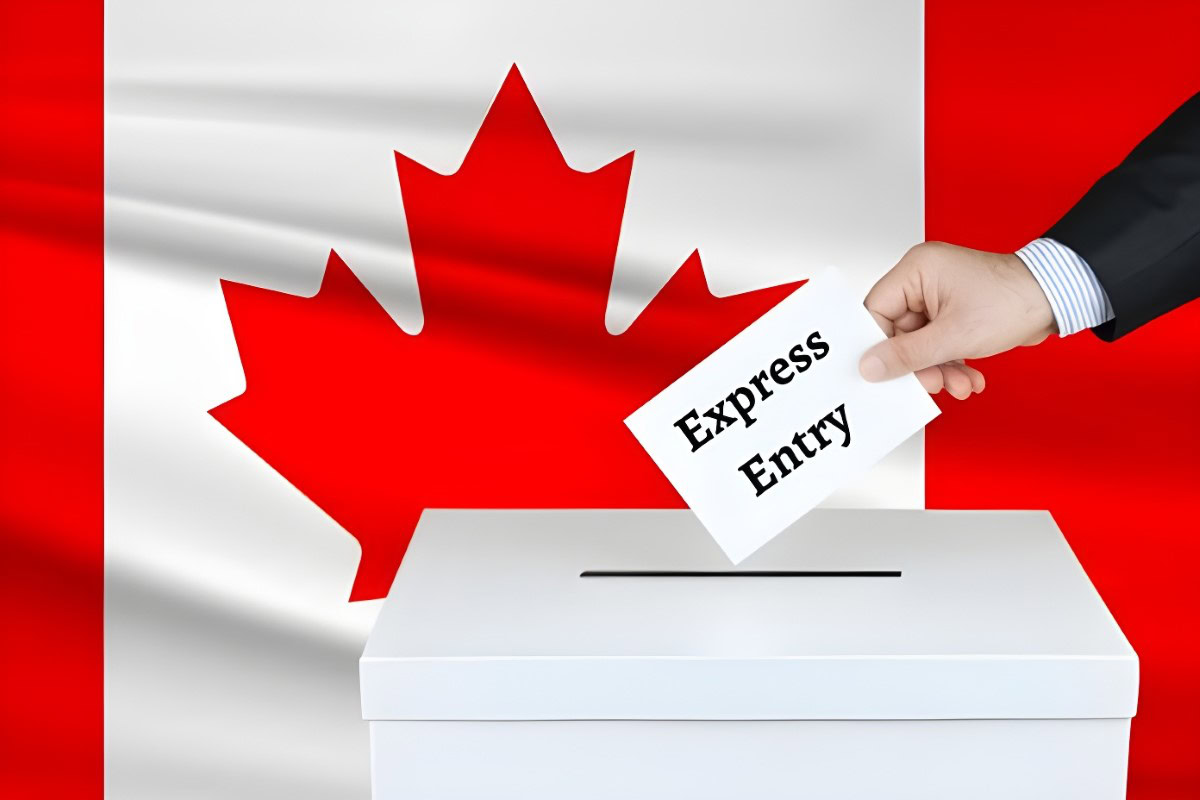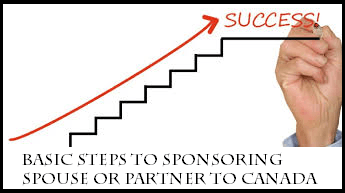Basic Steps to Sponsoring Spouse or Partner to Canada
Basic Steps to Sponsoring
Sponsoring a spouse, common law or conjugal partner or dependent child to Canada is not an easy process therefore knowing the basic steps to apply will help the sponsor and principal applicant throughout the application process. This article will discuss what who can and cannot be sponsor and what steps you need to take to get your application started.
Who can be a Sponsor?
You can become a sponsor if you
- Are 18 years of age or older
- Are Canadian citizen or permanent resident in Canada
- Are not receiving social assistance from the government aside from disability reasons
- Can demonstrate that you have sufficient funds to provide for the basic needs of the principle applicant and any dependent children of the principle applicant
Please note that if you are Canadian citizen and living outside of Canada with your spouse, partner or dependent child, you must demonstrate in your application that your intent is to live in Canada once the sponsored relative becomes a permanent resident. If you are permanent resident and living outside of Canada then unfortunately you cannot sponsor your relative to Canada. As a permanent resident you have to be inside of Canada to be eligible to sponsor your spouse, partner or dependent child to Canada.
If you live in Quebec you must meet Quebec’s conditions to be a sponsor.
Who cannot be a Sponsor?
You cannot be a sponsor if you
- If you owe the government money such as an immigration loan, family support payments or performance bond
- Failed to meet basic needs of previous sponsorship in which the sponsored relative ended up getting social assistance
- Are under a removal order
- Are in jail, probation, reformatory etc.
- Are collecting social assistance for a reason other than a disability
- Are in debt and your bankruptcy has not been cleared
- Were sponsored yourself (principal applicant) by spouse or partner (sponsor) and became permanent resident less than five years ago
- Sponsored a previous spouse or partner and three years have not elapsed since the principal applicant (sponsored person) became a permanent resident
- sponsored a previous spouse or partner and three years have not passed since this person became a permanent resident have already applied to sponsor your current spouse, partner or child and a decision on your application hasn’t been made yet were convicted of a violent or sexual offence, or an offence that caused bodily harm to a relative—or you attempted or threatened to commit any of these offences
Below will discuss 8 steps to sponsoring a spouse, common law or conjugal partner or dependent child to Canada.
Step 1: Read the Basic Sponsorship Guide
To avoid errors in your application it is highly recommended to read the Basic Sponsorship Guide also known Guide 5525. So prior to starting to fill out the forms and collecting the documents read the entire guide first to avoid common mistakes.
Step 2: Get the Document Checklist
When you get your document checklist it will tell you what forms you need, what documents you need to include with your application and it provides you links on how to fill out each forms. Depending on whom you are a sponsoring it will tell you which IMM checklist to use for your application.
For example:
- Checklist for spouse (including dependent children) [IMM 5533]
- Checklist for common-law partner (including dependent children) [IMM 5589]
- Checklist for conjugal partner (including dependent children) [IMM 5629]
- Checklist for a dependent child only [IMM 5534]
Simply, print out the checklist, follow the instructions and keep it on top your application as your cover page.
Step 3: Fill out your Forms
Once you have obtain your checklist the sponsor and the principal applicant fills out the forms and signs it
The sponsor must fill out and sign these forms:
- Application to Sponsor, Sponsorship Agreement and Undertaking
- Sponsorship Evaluation and Relationship Questionnaire
- Sponsorship Evaluation, this only applies if you are sponsoring your dependent child that has no dependent children of their own. If you are sponsor in Quebec than you do not need to complete this form
- Financial Evaluation Form, this only applies if you are sponsoring a dependent child that has dependent child of their own. If you are sponsor in Quebec than you do not need to complete this form
- Use of a Representative Form that is if you have hired a consultant or immigration lawyer to assist you with the application process.
The person being sponsored must fill out and sign these forms:
- Application to Sponsor, Sponsorship Agreement and Undertaking
- Generic Application Form for Canada
- Additional Dependants/Declaration, only if you have more than 5 dependants on your application
- Additional Family Information Form
- Sponsorship Evaluation and Relationship Questionnaire
- Schedule A – Background/Declaration
- Use of a Representative Form that is if you have hired a consultant or immigration lawyer to assist you with the application process.
Please note that when applying for any permanent resident application you must declare all your family members even if they don’t join you. So if you do not declare them you will never be able to sponsor them in the future. Also, as the permanent resident you could lose your status for not declaring family members.
Step 4: Gathering all the Documents
When gathering your documents for your application use the document checklist to ensure you need collect every document that is needed for your situation. Do not include a document that does not pertain to your situation.
If your documents are not in English or French you must make sure to include a certified copy of the original document and a certified translation of the document. Some countries require submitting original documents; therefore you must do your due diligence and check if your country requires originals or photocopies.
Every country has different requirements to see what documents or additional forms you need to include with your application you need to check country specific requirements.
Once your application is accepted for processing, you will be asked to submit an up-to-date police clearance certificate. You need to start the police clearance in advance to avoid delays in your application.
Step 5: Review your Application to Avoid Mistakes
Once you have gathered all your documents and completed the forms, review your application to avoid common mistakes such name spelled incorrectly, missing information, using wrong forms, outdated form, missing signatures, incorrect email, etc.
When ready to submit your application package put the forms in order they are listed on your checklist. Do not use staples, binders, plastic sleeves, folders or albums to submit your application instead use paper clips or elastic bands.
It is very important to ensure the email you have provided is correct as most communication is done online, having incorrect email or address may cause you to miss a communication from the government.
Once everything has been reviewed and you know it is correct validate your form. If any information is missing a pop-up-error message or a red square around the fields that need to be completed will show up. Once the forms are validated a barcode page will be created which you need to include on top of your application.
Don’t forget to pay the government fees online and including a copy of the receipt with your application. If fees are missing your application will be returned as incomplete.
Step 7: Submit your Application
When ready to submit your application include a copy of the checklist with your application on top of your application. Make sure to submit it to the correct mailing address, overseas and inland applications have two different addresses. Don’t forget to ask for tracking number from your courier provider. Do not go cheap on courier as you have important documents in there and last thing you want is your application getting lost. Having a tracking number from your courier provider will give you a peace of mind that your application been received by the government.
Step 8: Wait for Instructions from the Government
Once your application is submitted you wait approximately 1 to 2 months to get communication from the government. They will either return your application for missing information or they will give you a UCI number and that your application is in processing. Follow the instructions that you receive from the government.
Contact Akrami & Associates
Sponsoring a spouse, partner or dependent child to Canada is not an easy process. This article just gave you the basics but it is far more detailed and complicated when sponsoring a loved one to Canada. Citizenship and Immigration Canada is very picky when it comes to assessing the sponsorship application and can simply return it for having missing a date. It is highly recommended to go with a law with experience such as Akrami & Associates for higher chance of success and to avoid delays. Our immigration experts have helped many families reunite with their loved ones and we can help you too. Contact Akrami & Associates at 416-477-2545 for a consultation.
With Akrami & Associates there is always a way!!
Latest Immigrations News

September 11, 2025
Canada Super Visa: Step-by-Step Guide for Parents and Grandparents
For many Canadian citizens and permanent residents, bringing parents or grandparents to Canada for extended visits is more than just a wish, it’s a heartfelt need. While most people first consider the traditional visitor visa, there is another option designed specifically for family reunification: Super Visa applications. [...]

August 23, 2025
Intra-Company Transfer (ICT) Work Permit, Your Complete Guide to Working in Canada
For multinational companies, moving key talent across borders is often essential for growth and operational success. The Intra-Company Transfer (ICT) Work Permit provides a streamlined pathway to bring experienced employees to Canada without the time-consuming Labour Market Impact Assessment (LMIA) process. For foreign professionals, it’s more than [...]

August 7, 2025
Is Canada’s Express Entry System Still Fair? A Closer Look at What’s Broken, And How to Fix It
When Express Entry first launched, it was celebrated as Canada’s revolutionary new gateway for skilled immigrants, streamlined, merit-based, and economic-growth driven. But fast forward to today, and many highly qualified newcomers are starting to question whether the system is truly as fair or functional as it was [...]

Book a Conslutation
One of our Representatives will
assist you with your matter. Book Now!
Click here

Call us for
more Information
+1-416-477-2545
Toll Free: 1-877-820-7121
Click here

Write Us (Online Form)
Complete our form and one of our
Representatives will contact you.
Click here
Subscribe To Our Newsletter


